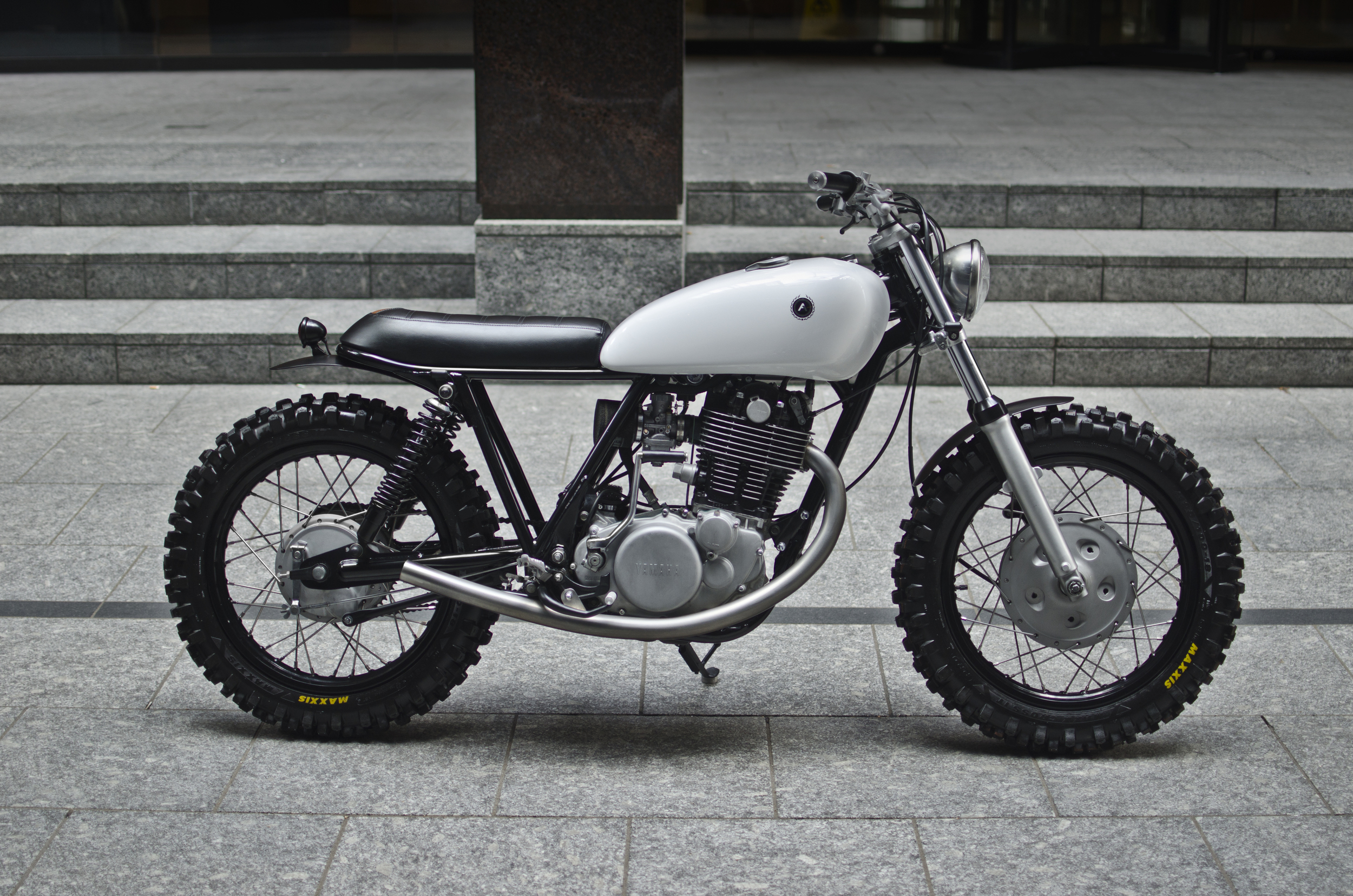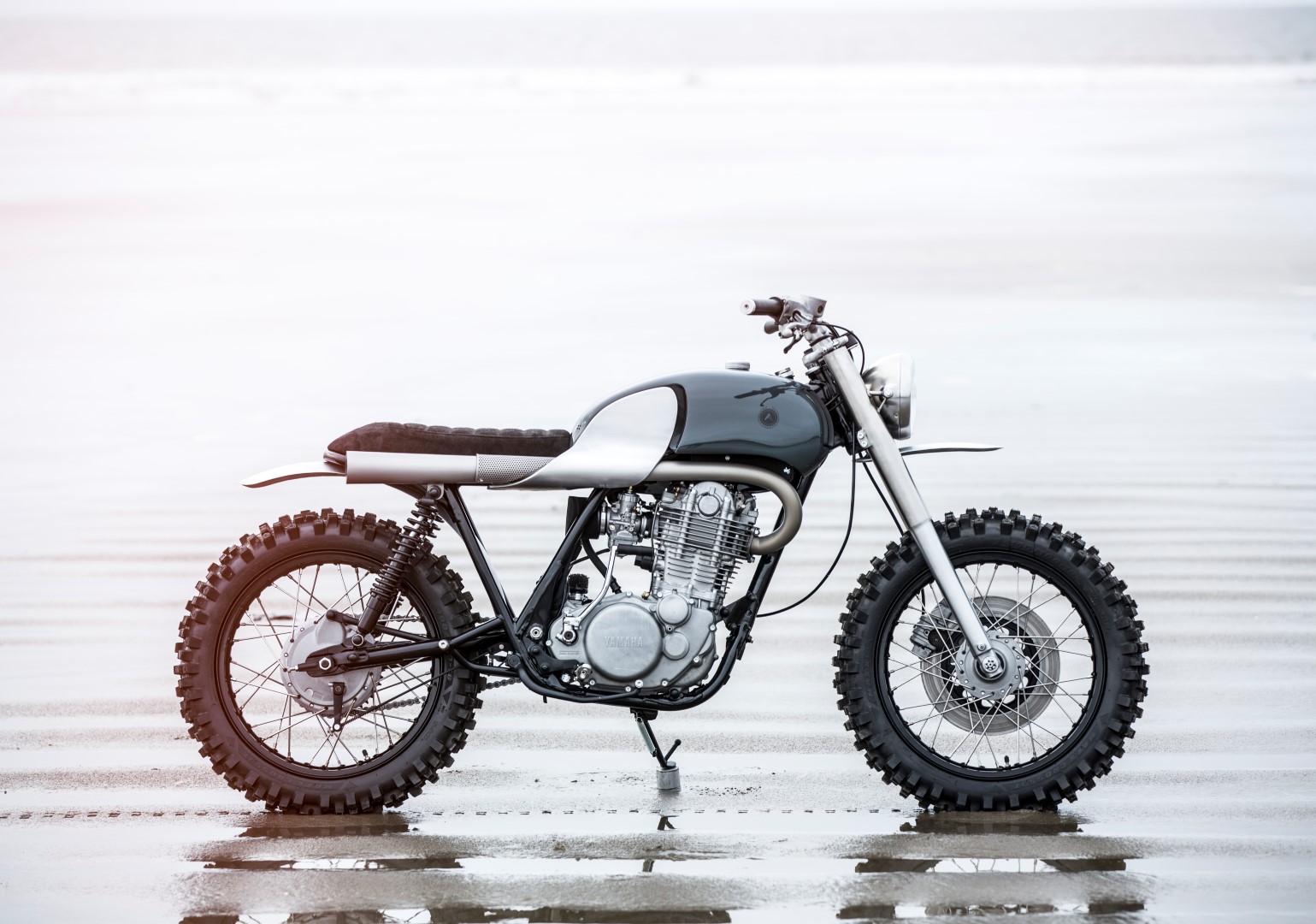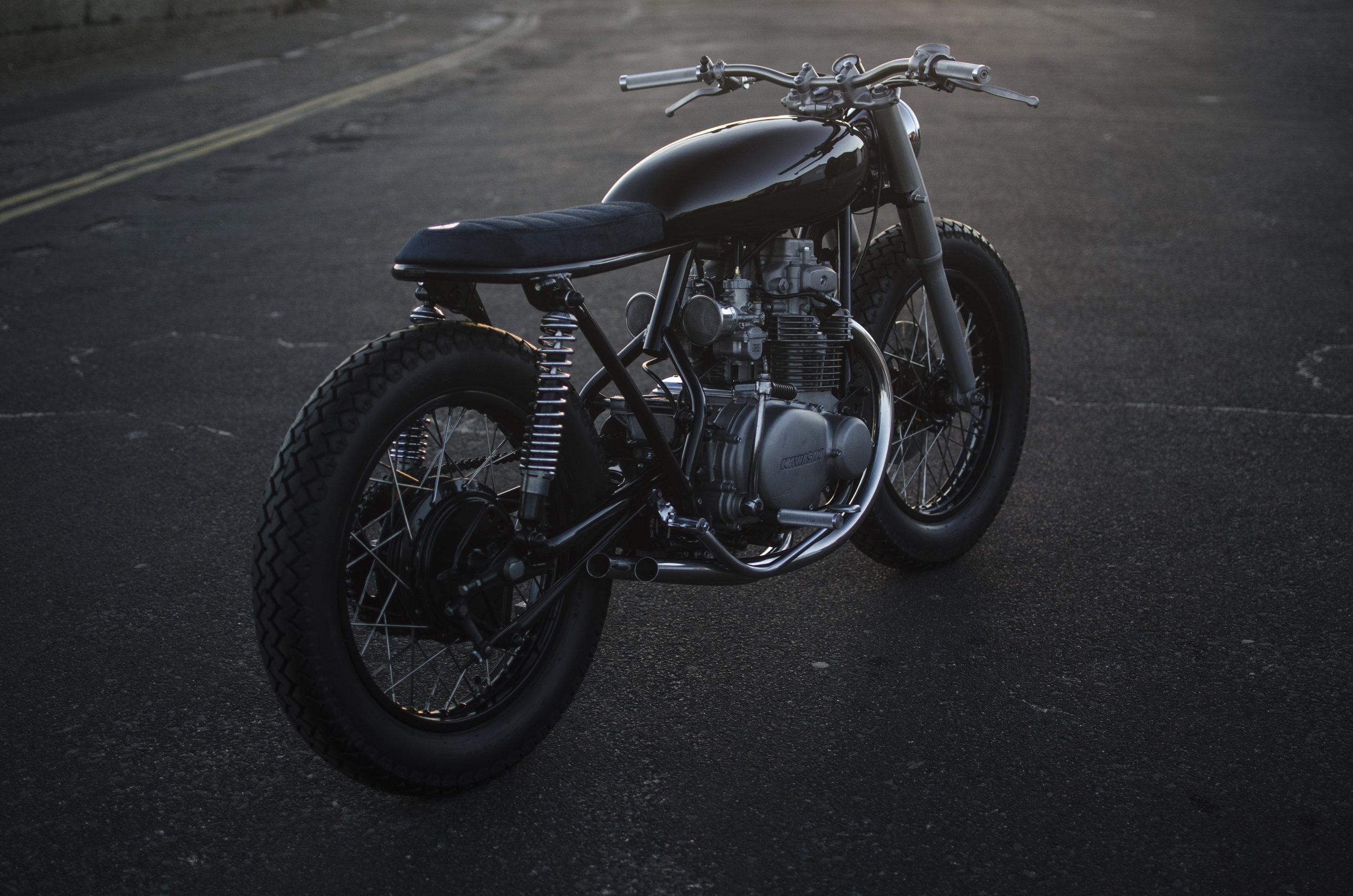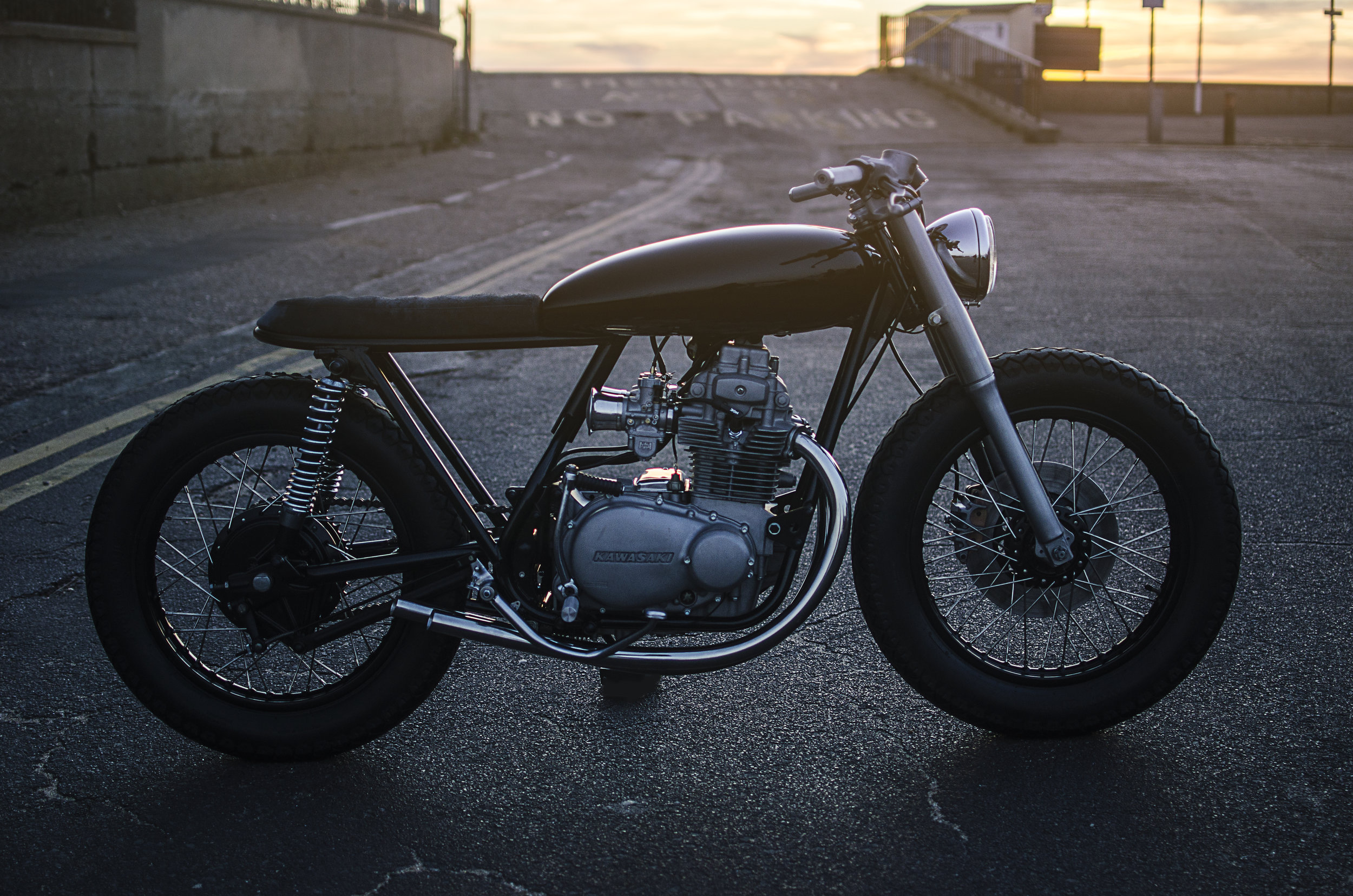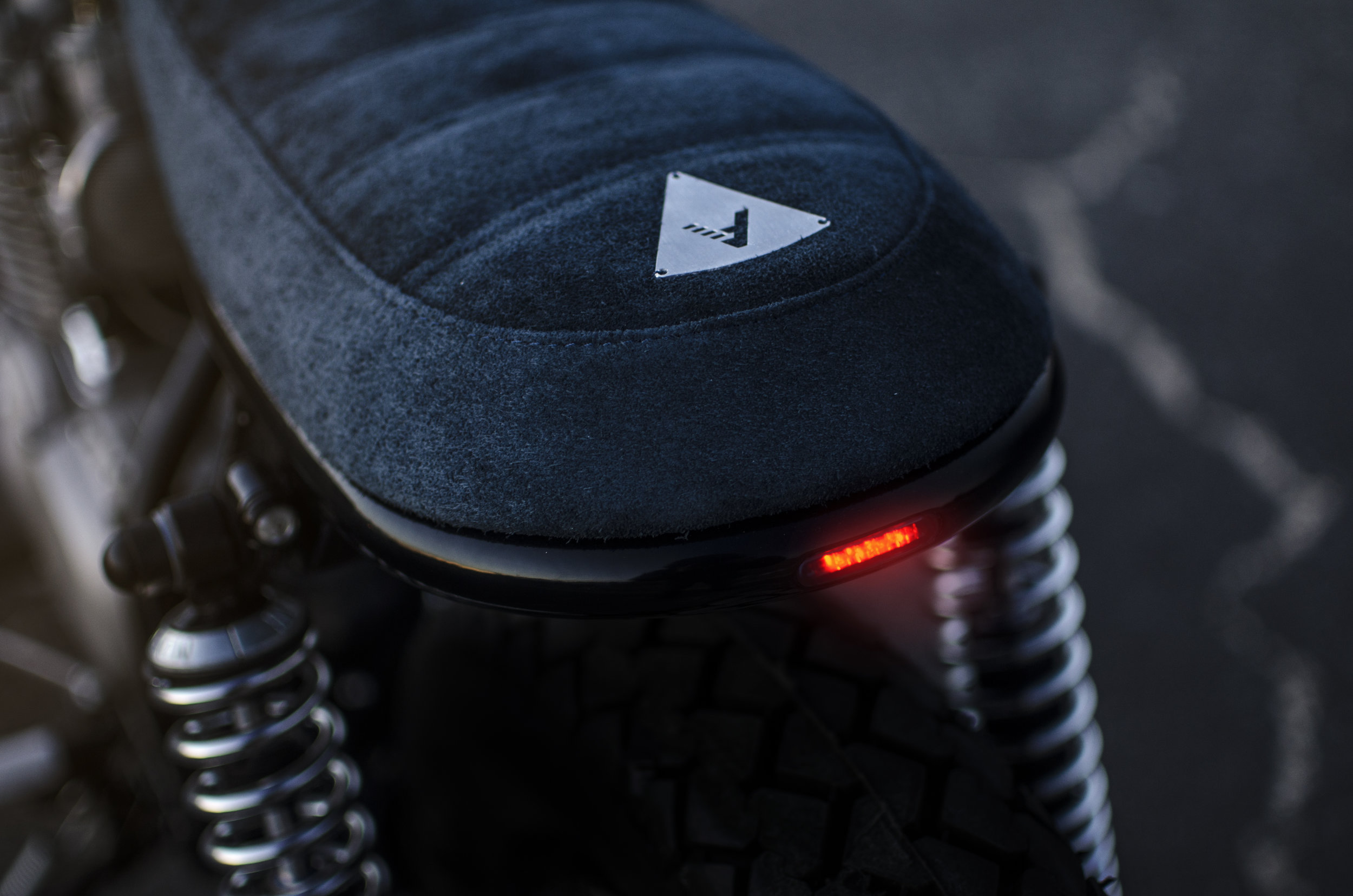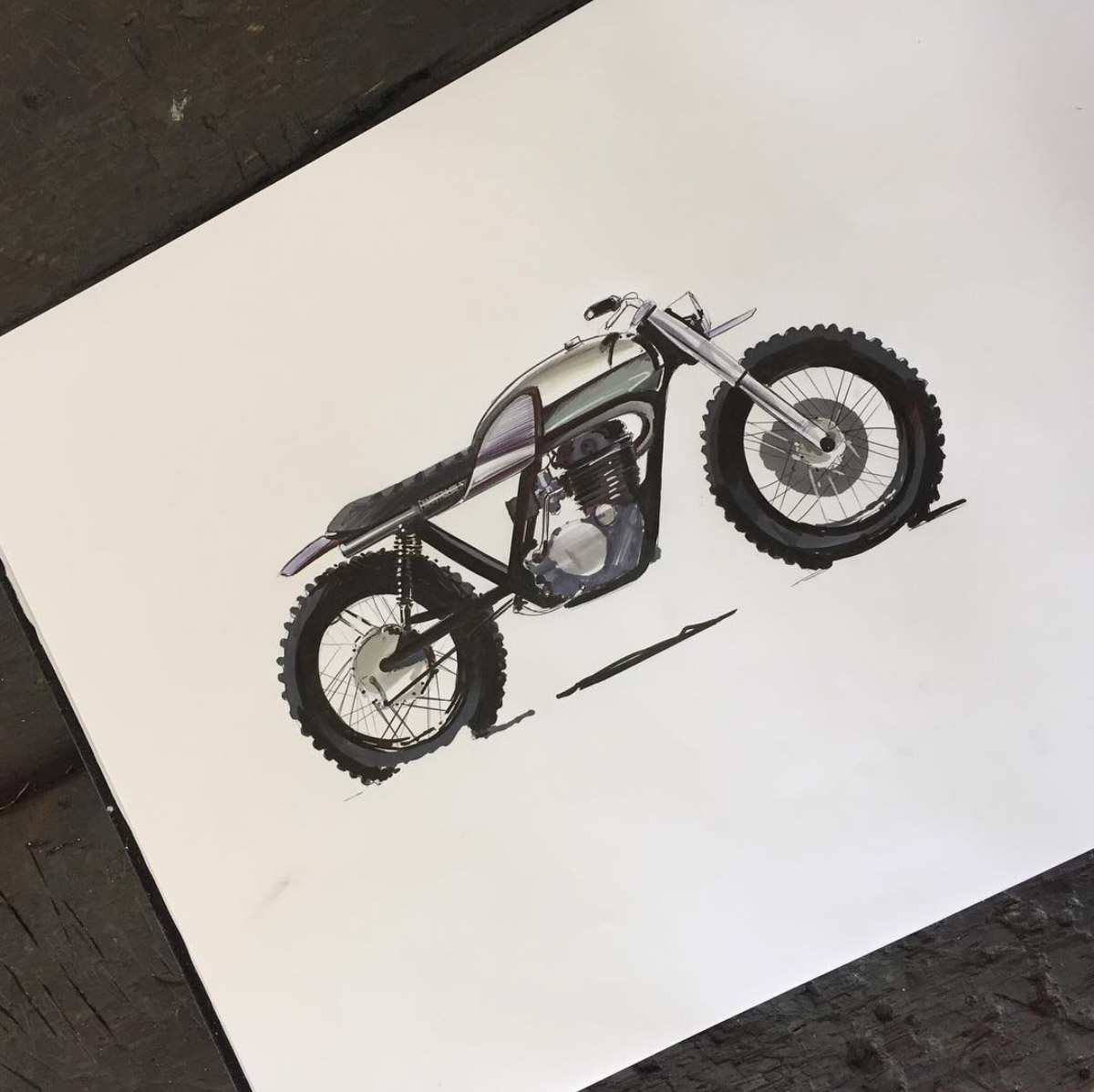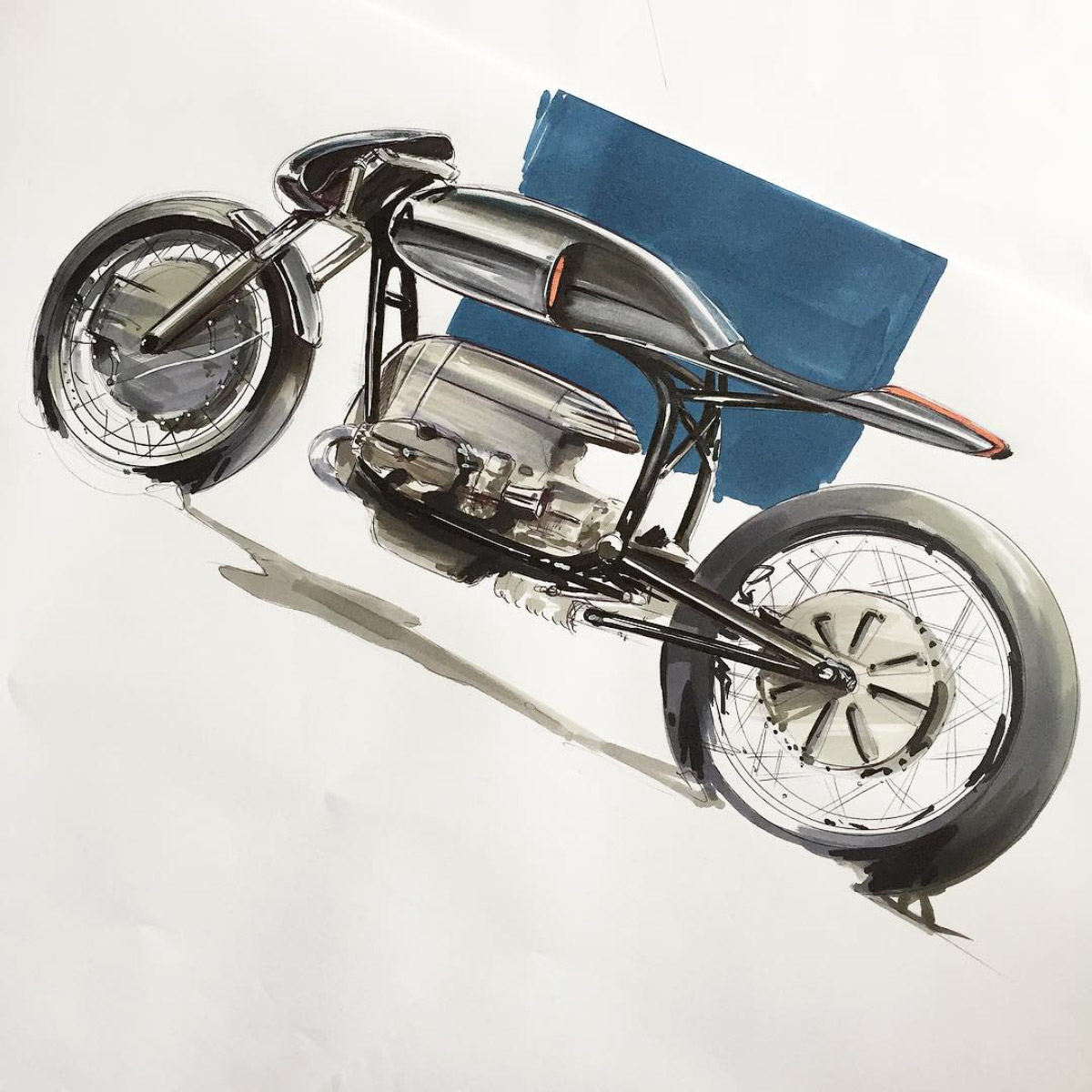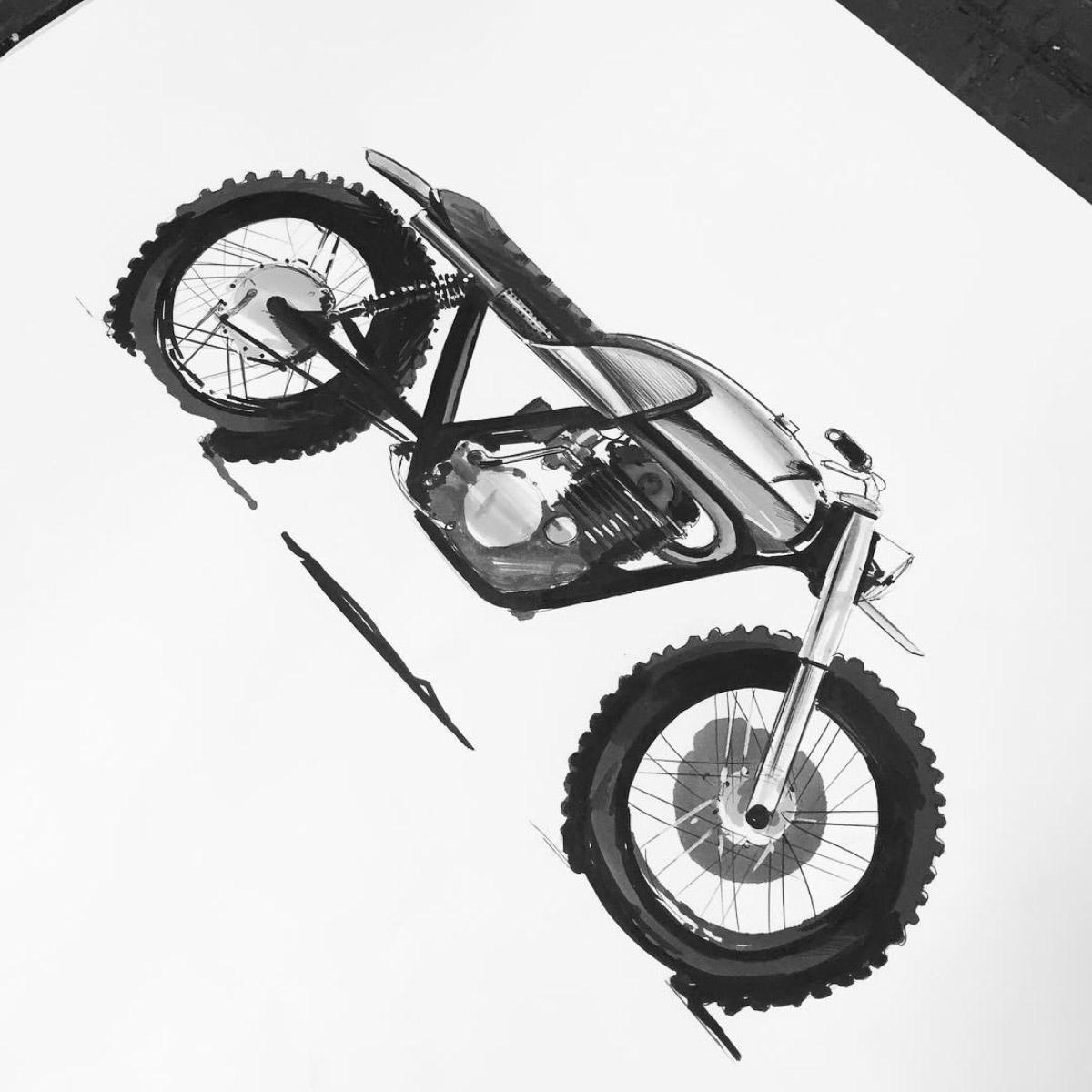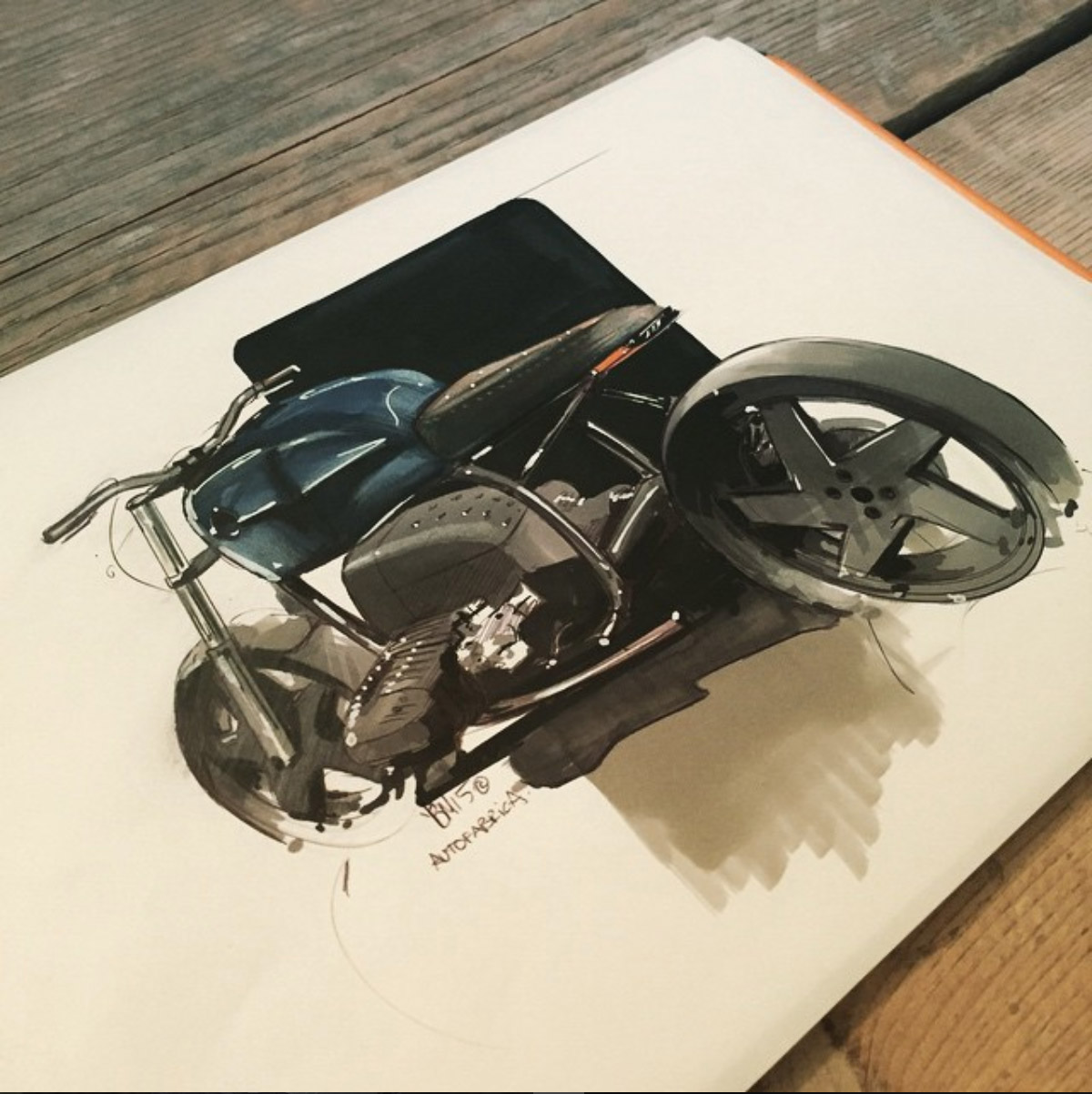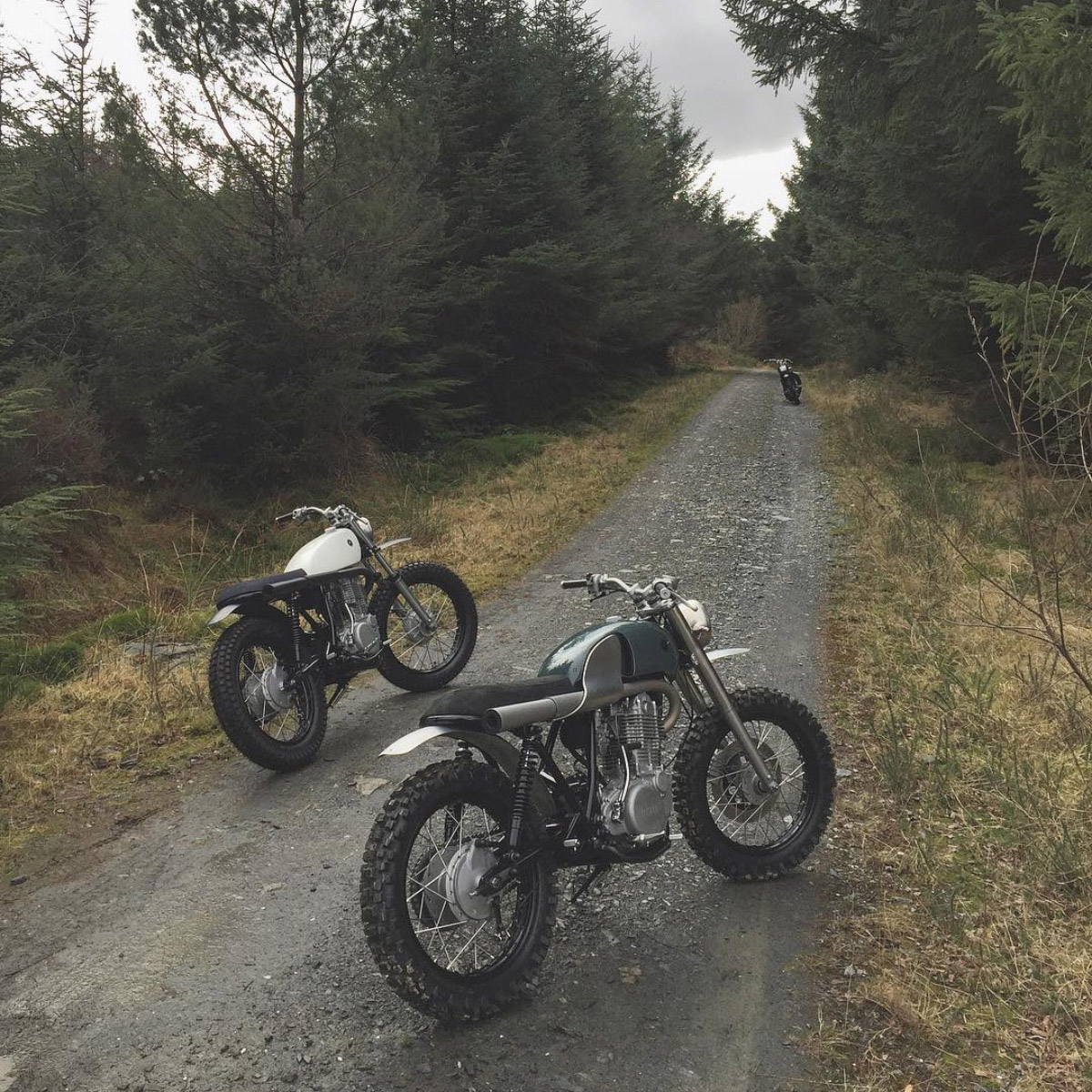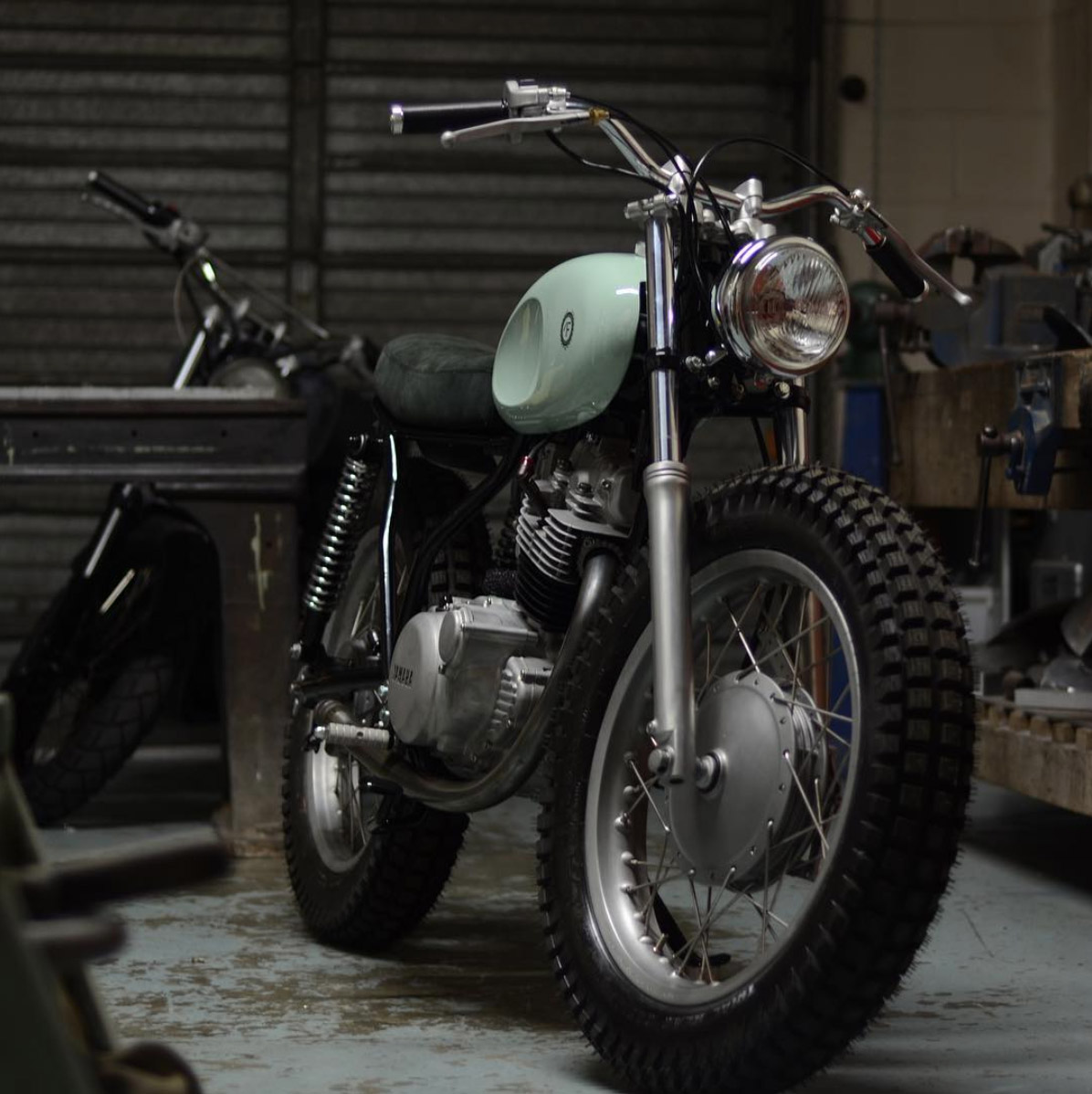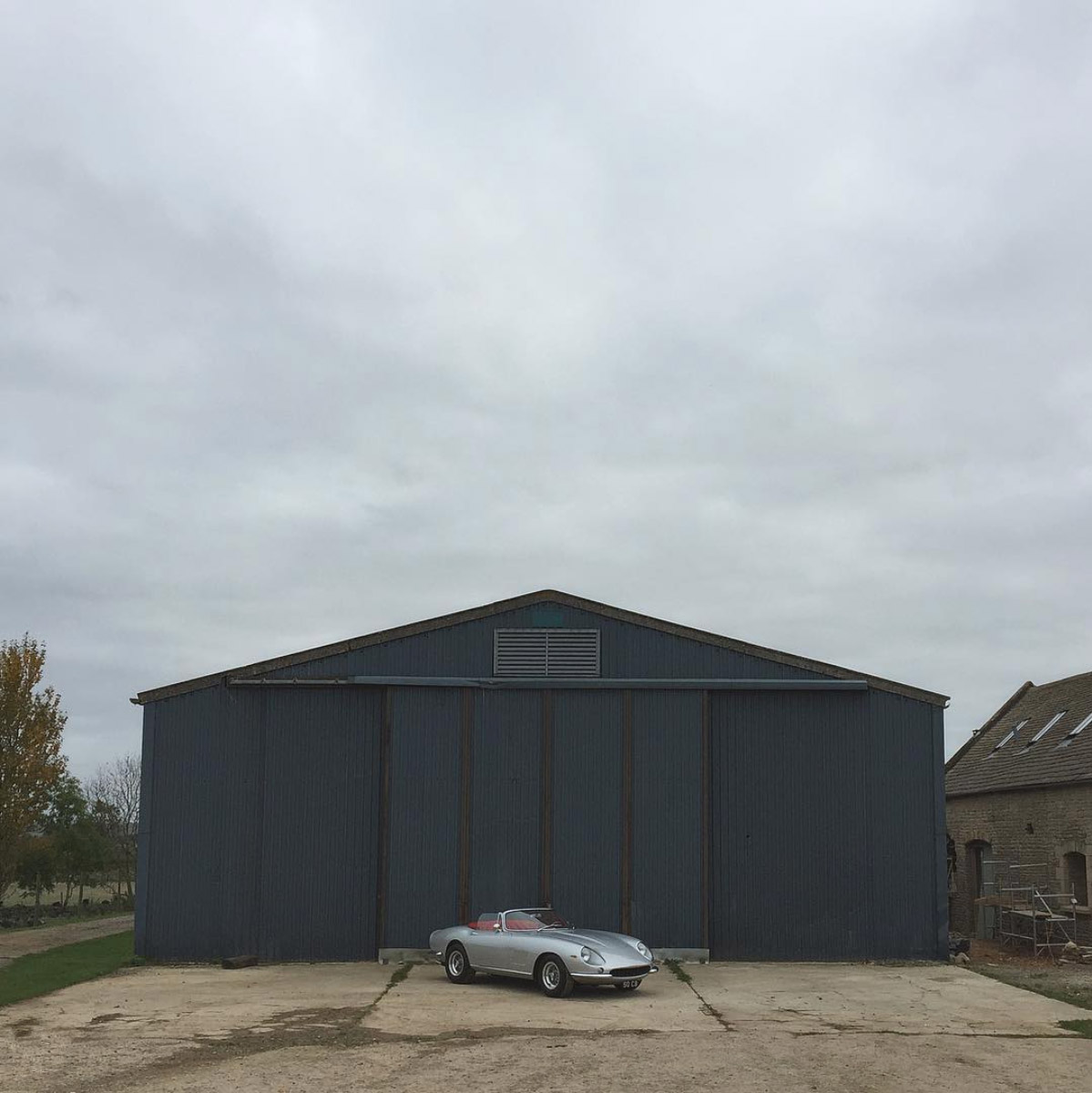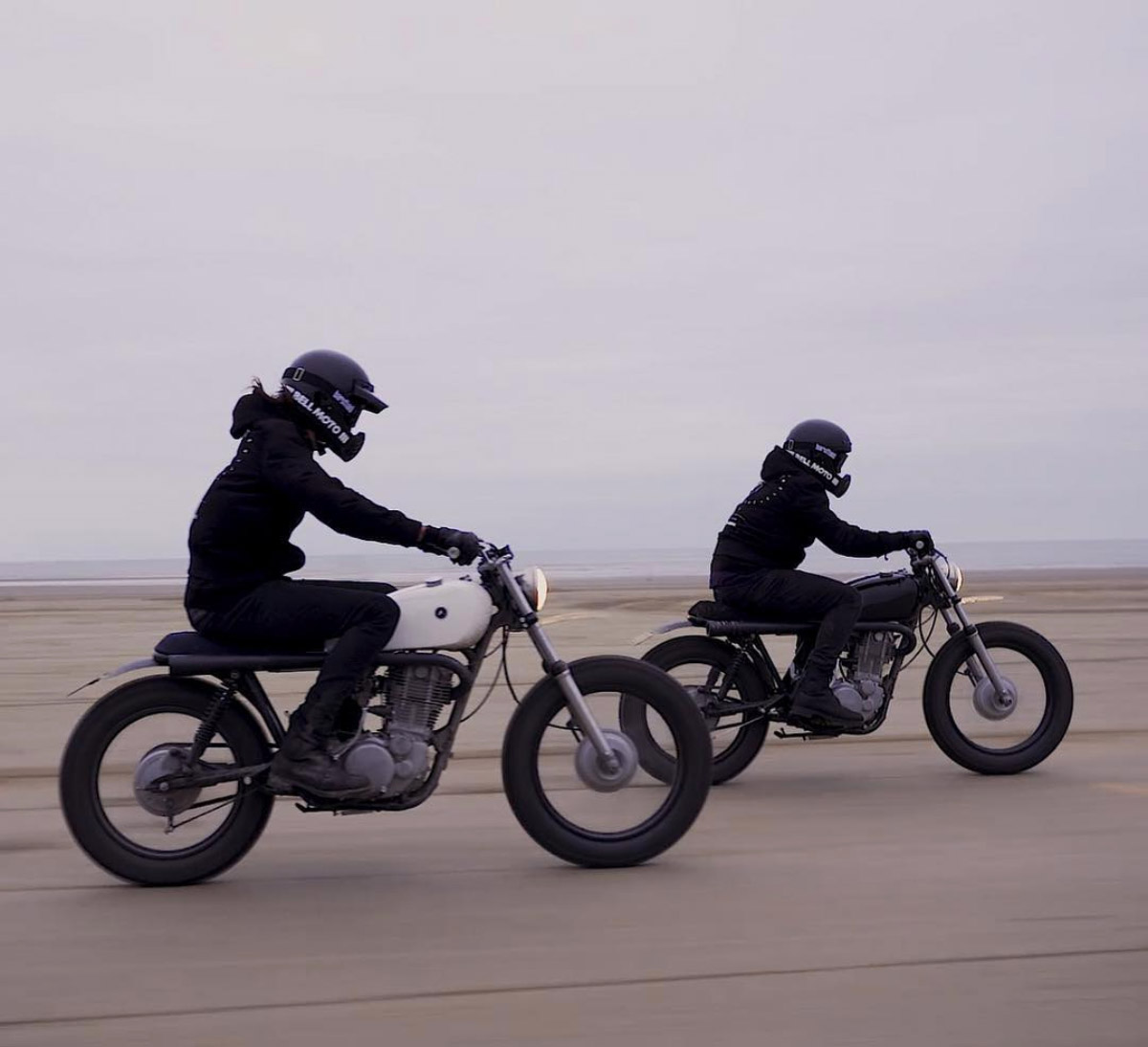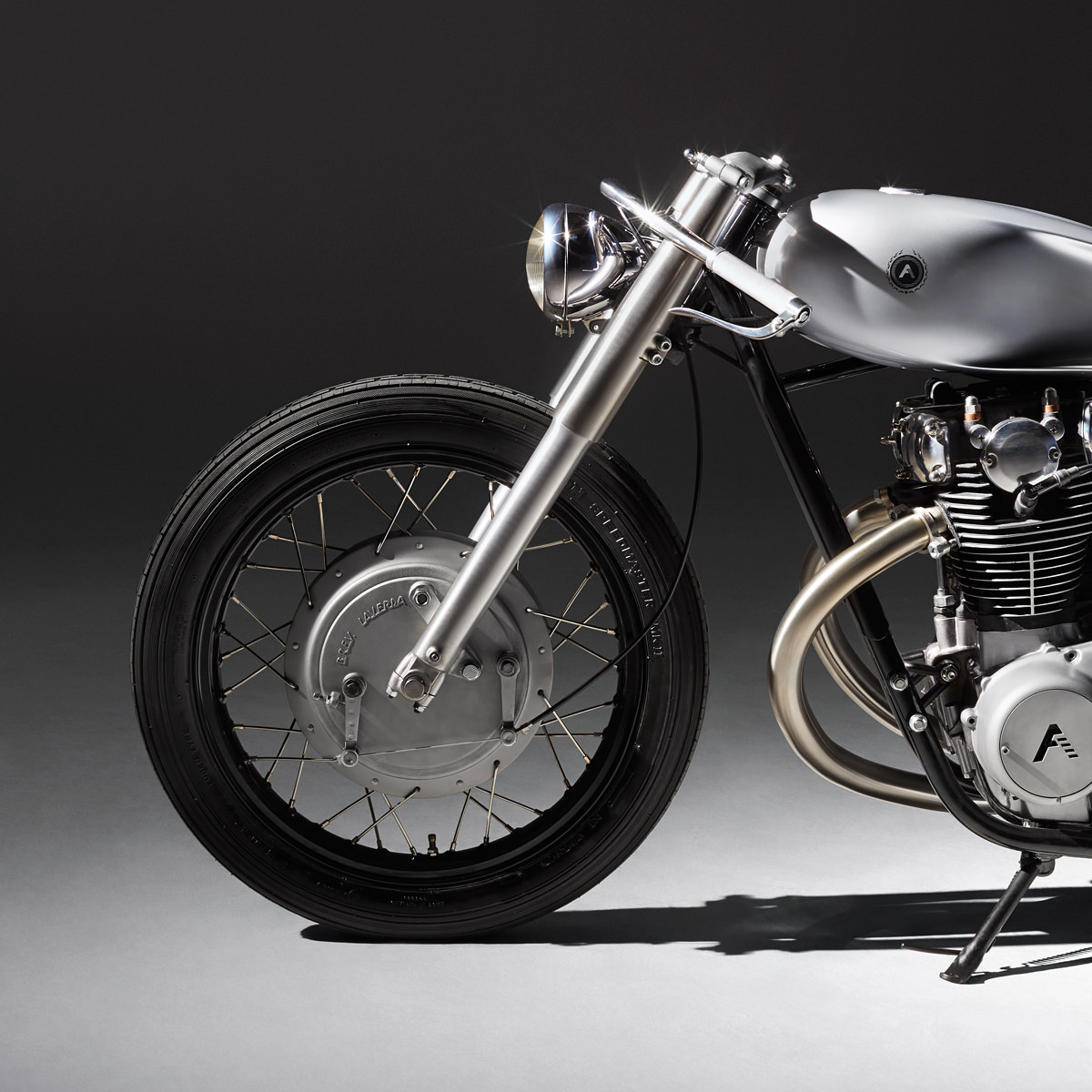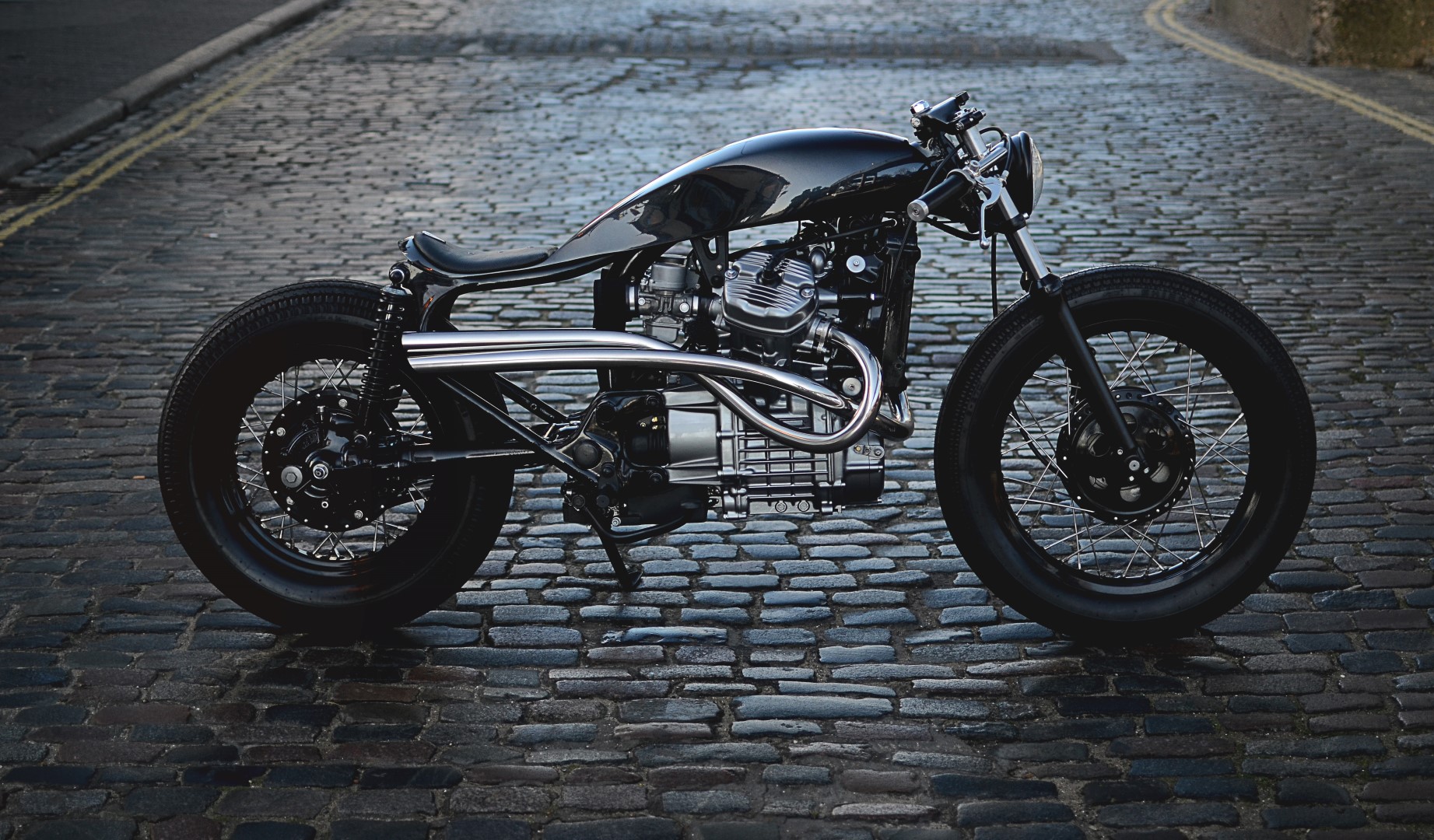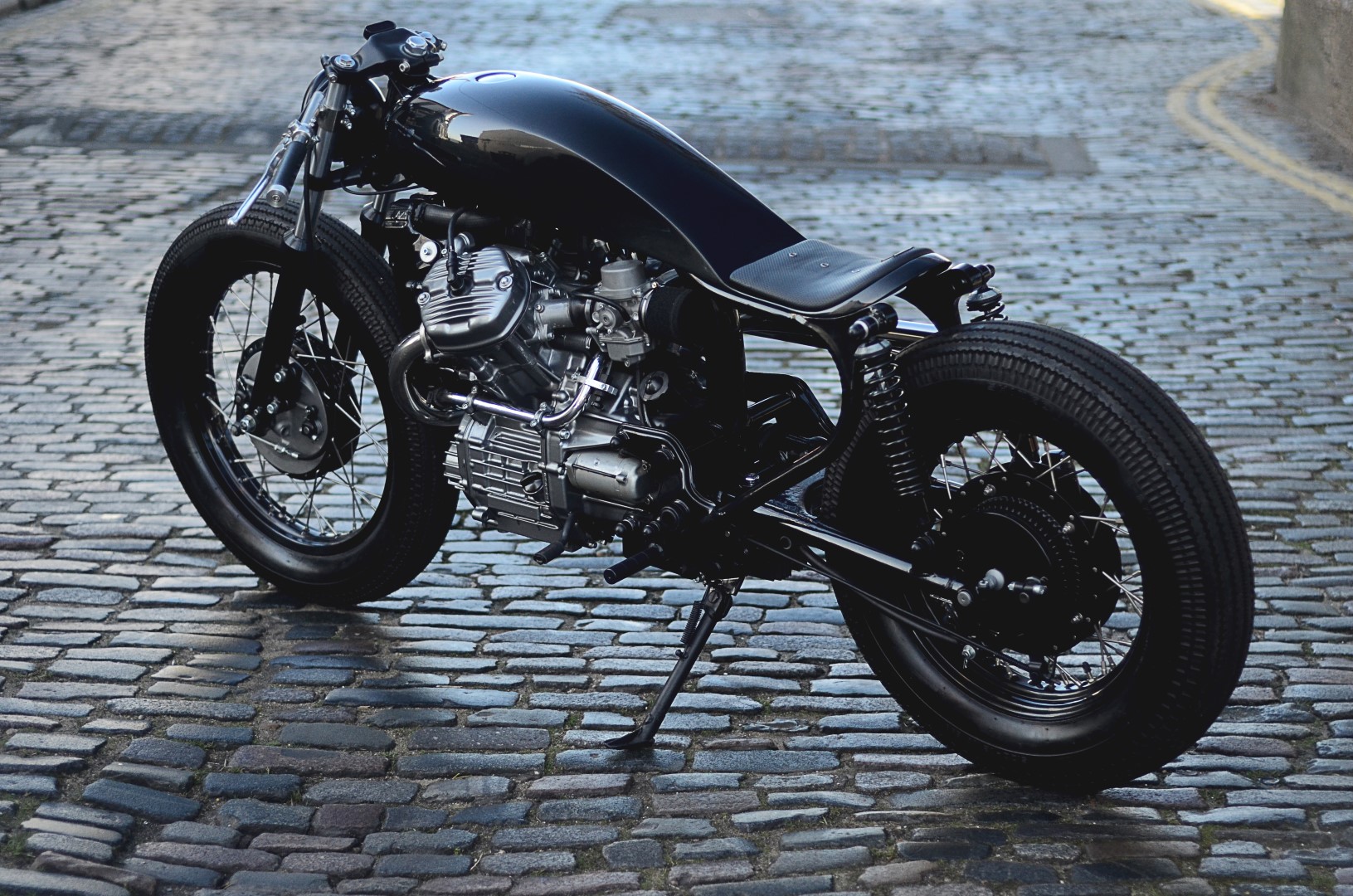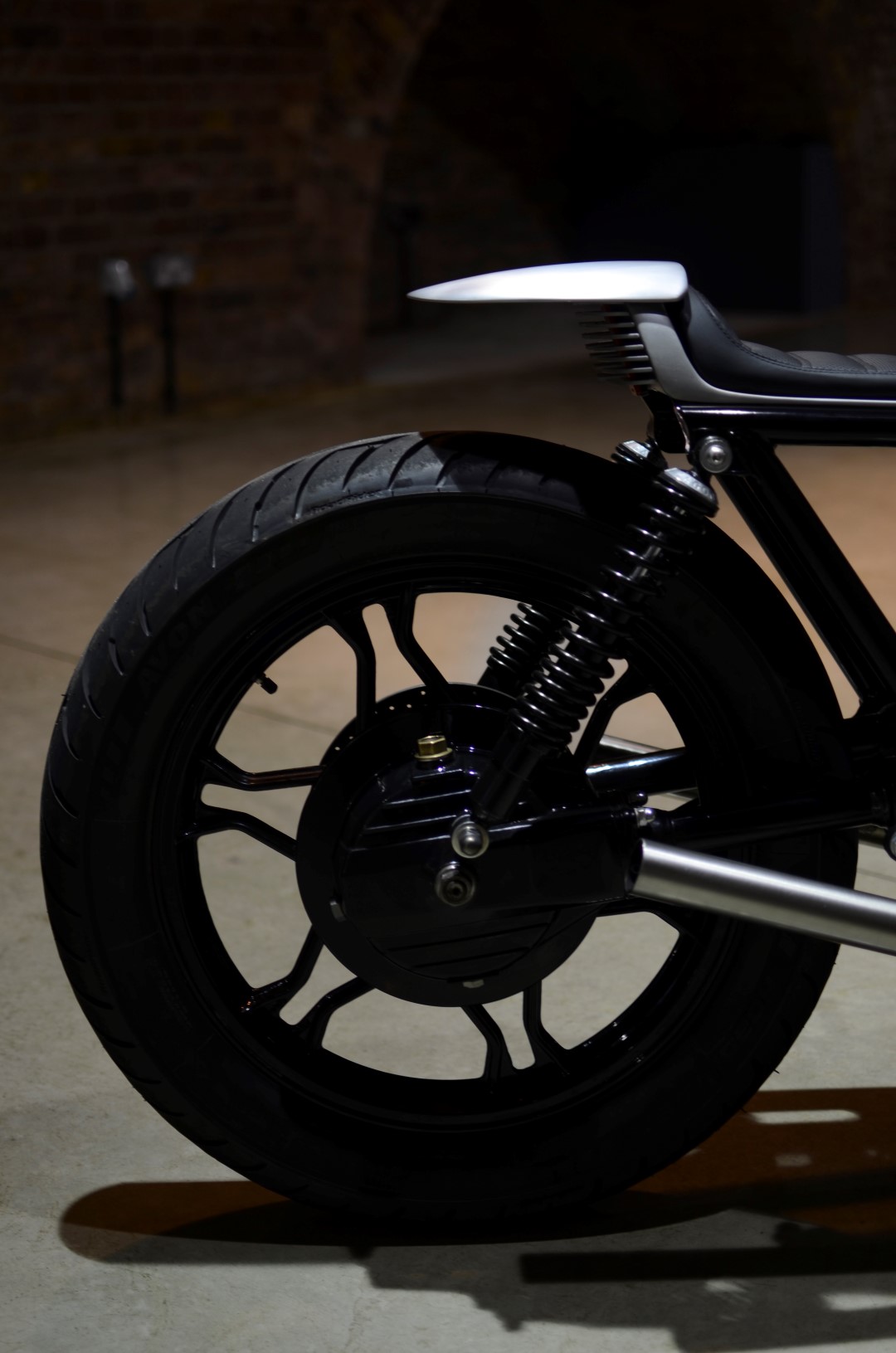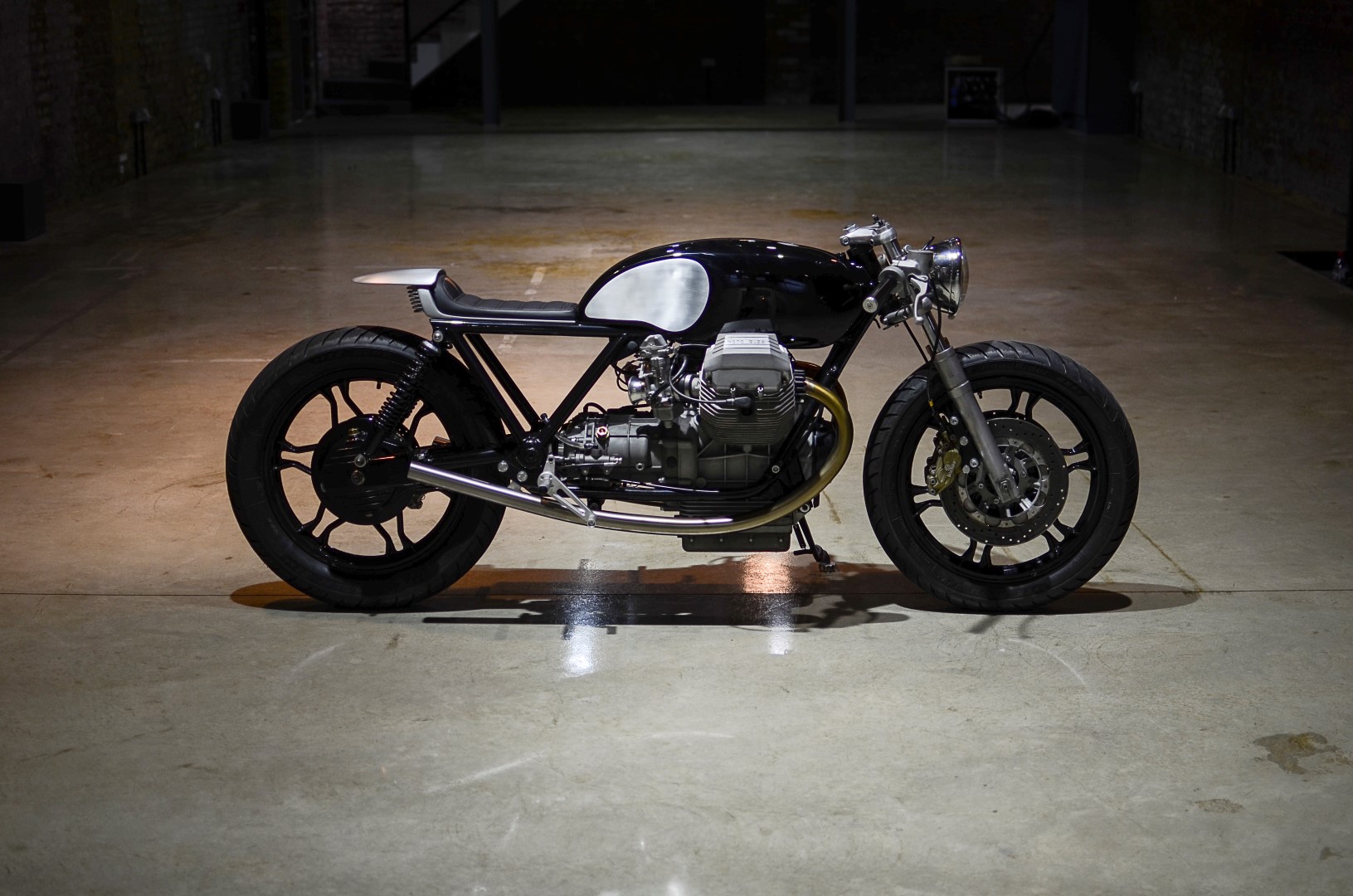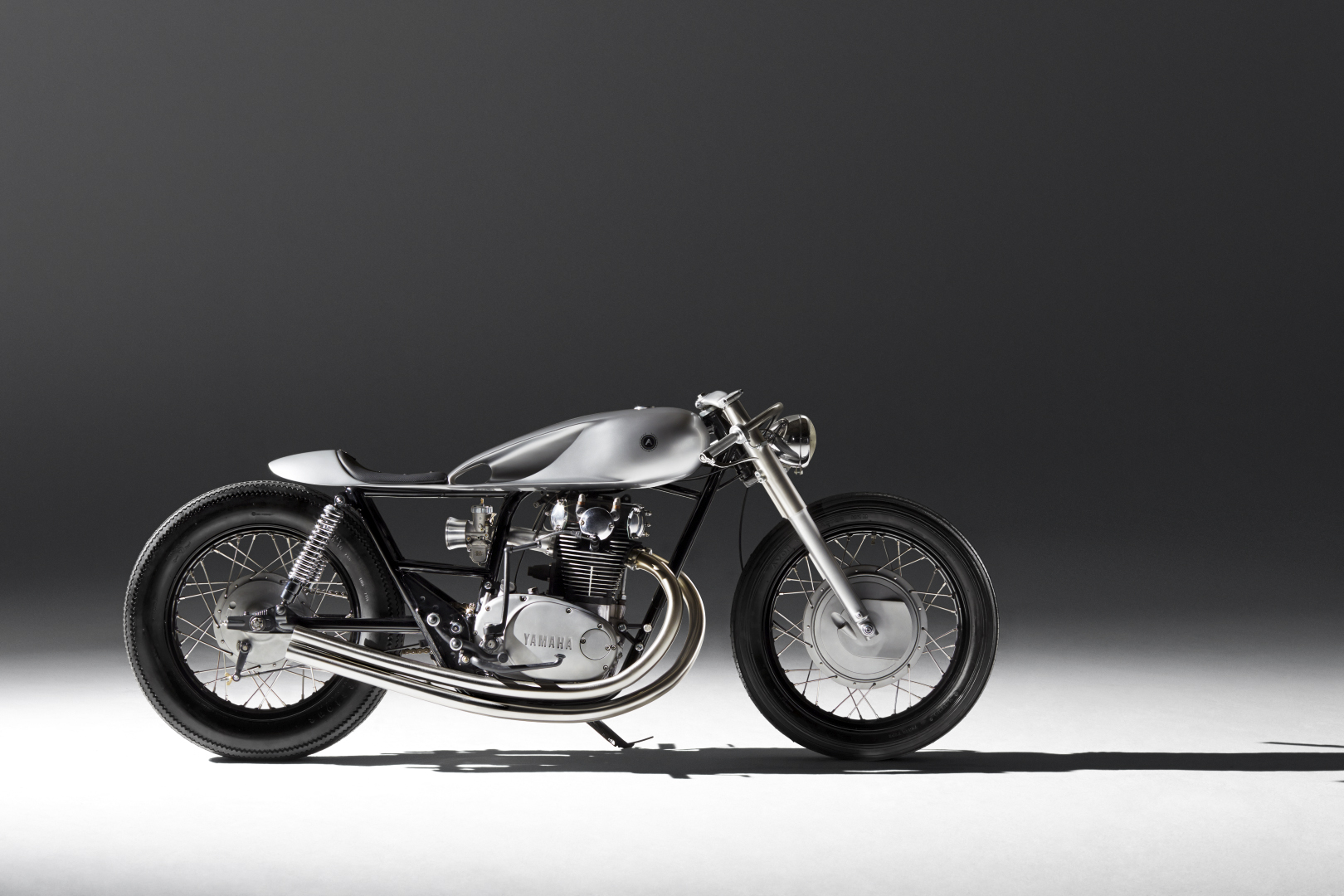Auto Fabrica
A series meeting designers, creatives and makers in the world of craft. Craft takes many forms from products to processes, objects to original techniques, handcrafted materials to printed paper. We have a great appreciation and love of craft and will be sharing a series over the coming months of people working hard in this space. What inspires them, what motivates them, what drives them. Stay tuned as we delve into their processes and share the inner workings of some great modern-day makers.
Meet Bujar, Gaz and Toby; the designers and makers behind some of the world’s most beautiful custom motorcycles. Based in Southend, UK, Auto Fabrica have created some of the most iconic motorcycles this century and continue with their approach to push the limits of form and function. We sat down at The Bike Shed, London, for a chat and beer to learn more about the journey they’ve been on and what’s next for Auto Fabrica. Including how Bujar should never be left alone with your new motorcycle and a hammer, how Dieter Rams’ continues to inspire their work and how sketching first is the answer to great team relationships.
Photograph by Tom Hampson
It’s great to meet you guys. Can you tell us about yourselves and how it started?
It started with me (Bujar) and Gaz back in 2012. Gaz is from a product design background and we’re brothers. Toby and I met at Coventry university where we studied automotive design together.
And have you always had a background involving bikes?
Yes. We started with BMX’s through to fix-gears but always bicycles originally. We’re originally from Kosovo and didn’t have the luxury of motorcycles. Unlike Gaz’s son has now! [referring to the recent project below where the guys built a mini moto version for Gaz’s son Leo]. We did always mess around with whatever vehicle we’ve had, whether it’s a car or a bike. It’s very rare anything stays stock that we have!
Leo showing off the latest mini-series
A short visual journey through a forest in Snowdonia featuring Leo riding the Type 0.5 by Autofabrica. Shot on the Sony FS5 on the DJI Ronin. All cinematography and editing all by Tom Underwood.
What’s the reason behind your constant need to tinker with things?
The way we look at things is to strip back and start from scratch. Our influences are people like Apple, and Dieter Rams; the philosophy of function and form working perfectly and harmoniously together. It was always bikes that captured what we were about - not in an awkward way - but slightly rebellious. We like the freedom they express - even as a kid getting a bicycle.
You mentioned Dieter Rams and his well-documented approach to design. Do you follow his principles?
The principles are something we’ve studied along with the fundamentals of design but we feel they are bred in to you over time. When we see something that works we just know. It’s like we already know it - we understand it.
“AF was built on form, function, simplicity. To be perfect in every way.”
We design heavily on proportions and that’s the key in our process. When designing bikes we wheel them outside and stand really far back and look at them from different angles. You can't design up close.
“Everything that’s made is made by hand - every cut, every curve - the detail is intentional.”
It all sounds like a perfect working relationship. Are there ever disagreements or one of you trying to push things much further?
We’ve got common ways of choosing and deciding what we’ll go for and we each have our own strengths. We have a subconscious understanding about what we want to achieve.
In truth it helps a lot that we design everything on paper out first. It’s not often we’ll make a piece and everyone’s like “holy fuck what have you done”. We’ve sketched it and gone through our process - we’ll model tanks in clay first then let ourselves imagine the rest of it together. Colours can be very subjective but we’re quite aligned. Some might say boring as we favour greys, black, white… silver. I’d say we’re conservative… considered even! Its part of us though. You know, the Type 14 design is so stripped back even people that love the minimalist design were like “holy fuck where is everything else?!”.
We want all our designs to be timeless. It’s something I hate in design when people initially love it then after a year they don’t. We like people to keep coming back and learning every time they look at it.
Tell us more about your process - is it the same for every design and build you do?
The process is mostly the same… it always starts with Bujar taking stuff apart! In reality there’s always a brief, a budget and time constraint set. We build up inspiration from our last build and find what we want to enhance then mood board and sketch up ideas. We look for inspiration everywhere from previous bikes DNA, and all other design areas; from Goodwood festival, to the design museum and Instagram.
Where do you look for inspiration?
We go to a lot of art shows; Clerkenwell Design Week, 100% Design, New Designers. We go to everything we can as you never know what you’ll see. CDW is great because there’s so much new talent. Even the venues they’re in are inspiration for how we show our work, down to the level of ideas for shooting film for a new launch. We never exclude an opportunity for new references. The beauty of the internet is everything global is at your finger tips but you’ve got to get out there.
The automotive shows are inspiring as they test new things out through concept cars. They’re basically one-off research studies in the industry. It’s the beauty of what we do as our bikes are essentially prototype bikes. If someone needed 10 you’d make it different for it to be a production bike. This way of working is best for us; doing un-commissioned work as we can express ourselves better that way.
Is that how most of your new builds work?
We have an idea for a bike so we design it and build it rather than a client saying I want this or do that. We do commissions as well but it’s based on a past bike that we’ve built. A client will say “I like the type 6 and want something similar”.
“We have an idea for a bike so we design it and build it.”
The more we work with other companies we realise we’re lucky to be in this position. Working with Yamaha at the moment is significant as usually we’re building these for people - essentially a piece of artwork they can ride around. It really does remove you from the norm a bit and what you expect a bike to do. I think people are scared to use them sometimes… incase they drop them! [Everyone turns their attention to Toby who has his hand strapped up from a recent crash on a trip to Wales…] "I was testing!"
The people that want a bike from us are patient people that probably have more money to invest than the normal custom bike builder and they’re happy for us to have free rein. Similar to going to an artist to point their picture, they trust the painter to know when it’s finished and ready.
The guys recent trip to Wales
How many of the people you sell bikes to are into art vs. into bikes?
Very rarely are they into bikes. Sometimes it’s their first bike. We’ve actually sold bikes to people without a licence! We attract a lot of people that treat them like artworks - it was never our goal. We want people to ride the bikes and we make them to be ridden. It’s form and function working together. We do encourage them to but with the amount of money they spend on these things you can’t make them!
What’s coming up next for AF?
A lot! What you’ve seen so far is just us dipping our toe in the water. We want to take AF to a level with 3 branches. Adventure vehicles, full blown custom artworks, and a mix of both that can be applied to something modern, more commercial and accessible with limited runs of maybe 10 or 20. We’re also looking to get into other forms of design too. We’re launching some clothing soon that will be 1/100 in limited numbers to allow people to get closer to the brand.
What’s the thinking behind everything being limited?
From a commercial perspective we aren’t selling our soul. It all started with passion and building bikes. We want the business to grow and make money but not become corporate. We specialise on special stuff - a lot of custom bike companies come and go - it’s a tough industry to keep your head above the water but we’re in a fortunate position. We want to still be industrial designers, not a clothing company and we don’t want to lose focus or lose creative control... especially with the bikes.
Does it go beyond the core team of 3?
We have a design consultancy side to the business run by Bujar and Toby that brings a commercial perspective to what we do and opens up new opportunities. That’s where we see Auto Fabrica going - more into prototype makers and consultants than just custom bike builders. We don’t want to lose focus on what we started out as but still have the opportunity to open up other areas of design. We’ll always build custom bikes no matter what… and cars!
Tell us more!
As we started out in the automotive design we always talked about doing a car one day. We did some work on a placement in our 3rd year where we learned how to go from sketch to production and got to go and help out a guy building. We’d still like to do it for ourselves one day. Though with the consultancy side we’re involved already in collaborations… but they’re all secret for now!
How are there enough hours in the day to take on these new projects?
We’ve realised AF is like a machine where we can feed anything in and get AF style at the end of it. Whether it’s two wheels or four. In the future we’re looking at different mediums and ways. We’ve got the internal infrastructure with the 3 of us to apply to any product. That’s what design means to us. We can apply our theory on design to anything as long as we know how to get from sketch to production.
A good example is Pininfarina and the coach builders from Italy back in the 50/60/70’s. Bic lighters approached them to design a lighter which they did, and that’s what we’re aiming towards. To be a one-stop shop and work on things that interest us.
Do you have a motto?
Work fuckin’ hard and keep going. If it was easy everyone would have done it.
Top tips for up-and-coming designers?
1 - Don’t force an idea that doesn’t naturally flow.
2 - Understand what you want to do, and do it.
3 - Work hard on the things you love.
4 - Learn everyday.
GoodFromYou Bujar, Gaz & Toby
Web autofabrica.com
Instagram @auto_fabrica – @autodesign.works
Contact info@autofabrica.com
A special thanks to photographer Tom Hampson.





